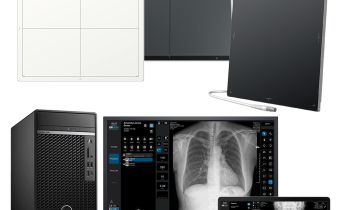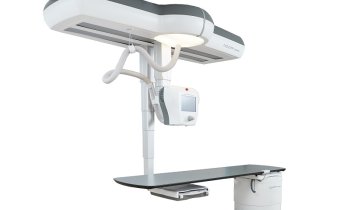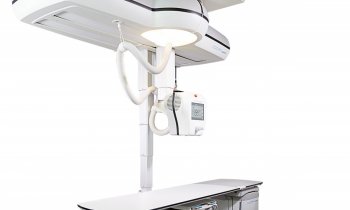Article • Teamwork
Radiographer calls for increased cooperation with radiologists
The increased demand for imaging studies and workforce shortages have put strain on radiology services while technological advances enabled other medical disciplines to perform their own imaging examinations.
Report: Mélisande Rouger
To hold their ground, radiologists and radiographers must work together and develop common strategies, an expert will argue during a dedicated professional challenges session organized by the European Federation of Radiographers Societies (EFRS) and the European Society of Radiology (ESR) at ECR 2017.
“Workforce shortages, workload increase, workplace changes, new technologies and budget challenges put quality of medical imaging and radiology at risk,” Dr. Graciano Paulo, professor of Medical Imaging & Radiotherapy at Coimbra Health School in Portugal, said.
Assessing opportunities and challenges facing radiography and radiology has become mandatory because medical imaging is being taken over by other specialists, Paulo, co-founder of the EFRS, explained.
“While the number medical imaging procedures has risen sharply over the past fifteen years, there is evidence of a shortage in the number of radiologists and radiographers. This can only mean that the imaging procedures are being fragmented and slowly being taken by others. Cardiologists, orthopedists and many other specialists now perform their own interventional procedures and imaging investigations. Technology is becoming more available, smaller and easier to use, so the boundaries of the profession are disappearing,” he said.
Many experts agree that radiologists need to have more contact with patients and within the clinical team to secure their position.
One solution would be to delegate part of their workload to radiographers, Paulo suggested.
“Training an advanced-practice radiographer to work in close cooperation with a radiologist would enhance patient care and increase the visibility of the radiologist. The radiologist would have more time to do clinical work and interact with patients and his peers instead of sitting behind his/her screen filling reports,” he said.
In some countries like the UK, where the number exams is increasing every year, radiographers already fill in the imaging report for plain x-ray examinations and in close cooperation with the radiologist.
A special position in the imaging chain
The radiographer has a special position in the imaging chain, and this role could benefit both the patient and the radiologist, according to Paulo.
“The radiographers are gatekeepers to radiological equipment and act as real pivots between referrers, patients and radiologists. Allowing and improving skill mix and joint guidance between the two professions can give the radiologist more time to do clinical work and meet the patient,” he said.
Radiology, an increasingly deserted specialty, would become more attractive in return; similarly, more young people would decide to become radiographers if training included disease knowledge, Paulo believes.
“If we manage to bring the two professions together towards a new paradigm in the way we provide service to the patient, this will increase professional satisfaction of both radiologists and radiographers and make both professions more attractive,” he said. Radiographers education and training programs level across Europe should be harmonized, and include a minimum European Qualification framework (EQF) level 6 of knowledge, Skills and Competences (KSC) and a 240 ECTS program. Some countries are currently lagging behind.
“In Spain, the radiographer profession has one of the lowest qualifications in the world. It’s not a university degree and training lasts only two years. Almost everywhere else, radiographers must train four years (240 ECTS). Many Spanish radiographers are actually training in Portugal to have their skills recognized internationally. So we are currently working on convincing the Spanish government of the necessity of training radiographers more appropriately,” he said.
Besides, imaging services need to use a common coding system across Europe to make sure they are comparing the same type of data, regardless of the country or institution. Departments should also adopt workflow performance metrics, clinical indication oriented protocols, audit and accreditation systems, Paulo recommended.
“With these pillars, we would be able to increase the visibility and recognition of radiology in healthcare systems. But we can only do this together in Europe,” he said.
In the end, the future of medical imaging will depend on both professions’ capability of working as a team, based on roles and responsibilities, bearing in mind that the patient should be always in the center of the process, with a holistic approach, he added.
“We should be proactive in finding a solution because when we want to be reactive, at that point, it will be too late.”
Profile:
Graciano Paulo is a full time professor of medical imaging & radiotherapy and vice president of IPC-Escola Superior de Tecnologia da Saúde in Coimbra, Portugal. He is a co-founder and past president of the European Federation of Radiographers Societies (EFRS). Dr. Paulo has a bachelor’s degree in radiography, a master’s degree in health economics, and a PhD in health sciences. His main area of research is radiation protection.
Event information:
PI 1 - Improving efficiency in radiology departments
Friday, March 3, 10:30 - 12:00
Room: M 2 Session
Type: Professional Issues and Economics in Radiology (PIER)
Topics: Radiographers, Management/Leadership, Professional Issues
Moderators: J. A. Brink (Boston/US), S. Morozov (Moscow/RU)
03.03.2017











